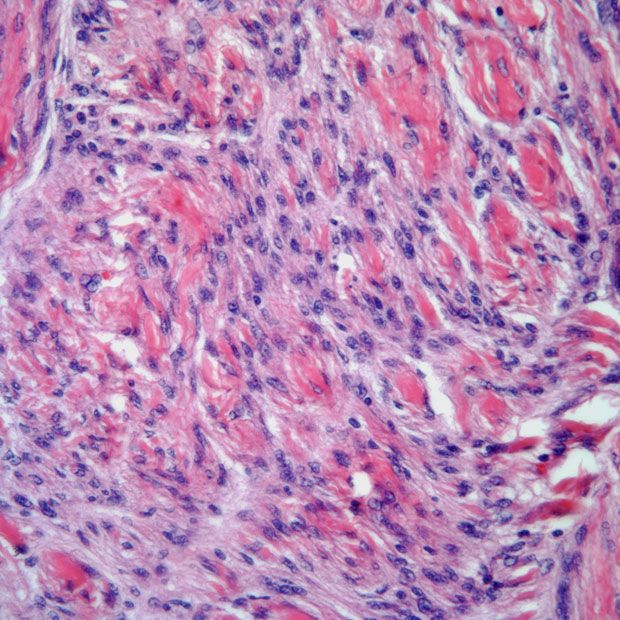Therapy Reduction May Not Affect Survival in Pediatric Neuroblastoma
Patients under the age of 3 with neuroblastoma experienced no significant negative impact on survival when their disease was reclassified from high-risk to intermediate-risk and their therapy was thusly reduced.
In 2006, the Children’s Oncology Group (COG) raised the minimum age at which patients could be assigned as having high-risk neuroblastoma from 12 months to 18 months; those reclassified as intermediate risk under the new schema experienced similar survival outcomes despite the commensurate reduction in therapy, according to findings from a study published in the Journal of Clinical Oncology.
"Herein, we have demonstrated that the change in age cutoff was appropriate and that COG’s decision for assignment to reduction of therapy in these subgroups was successful," according to the study investigators.

For patients with stage IV disease and favorable tumor biology, the 5-year event-free survival (EFS) rate before the reclassification and reduction in therapy (n = 55) was 89.0%±5.1% vs 87.0%±4.6% (P = .7) after the reduction (n = 40). Additionally, the 5-year overall survival (OS) rates were 89.0%±5.1% vs 94.0%±3.2% (P = .4), respectively. For those with stage III disease and unfavorable biology, the 5-year EFS and OS rates were 100% before (n = 6) and after (n = 4) reclassification, with no events reported.
Investigators also reported that those classified as high-risk in 2006 or earlier had an EFS rate of 91.0%±4.4% and an OS rate of 91.0%±4.5%, whereas the corresponding rates among patients in the post-2006 cohort were 88.0%±4.3% (P = .6) and 95.0%±2.9%, respectively (P = .5). Additionally, in high-risk patients who were less than 3 years old and diagnosed in 2006 or earlier, the EFS rate in combined cohorts of interest were 91.0%±4.4% vs 38.0%±1.3% in other high risk patients (P <.0001). The corresponding rates for OS were 91.0%±4.5% compared with 43.0%±1.3% (P = .0001) .
In the population of intermediate-risk patients who were younger than 3 years of age and diagnosed after 2006, investigators were not able to identify a significant EFS difference between combined cohorts of interest and other patients of the same risk level, including rates of 88.0%±4.3% vs 88.0%±0.9% in each respective group (P = .9). The corresponding OS rates were 95.0%±2.9% and 95.0%±0.6%, respectively.
“To our knowledge, this is the largest and only known study to focus on a comparison of toddlers with favorable biology tumors before vs after an assigned reduction of therapy for neuroblastoma,” the investigators wrote. “Herein, we have demonstrated that the change in age cutoff was appropriate and that COG’s decision for assignment to reduction of therapy in these subgroups was successful.”
The retrospective cohort studyincluded 9189 eligible patients who enrolled on a COG biology study between 1990 and 2018. A total of 105 patients were included in the toddler cohorts of interest population, 95 of whom were between 12 to 18 months with stage IV disease and favorable biology, and 10 were 12 to 18 months with stage III disease and MYCN not amplified–/unfavorable-risk biology. Twenty patients enrolled on a therapeutic trial and 85 were enrolled on a biology study. None of the assessed patients had MYCN amplification.
Select characteristics such as patient sex, diagnostic category, grade of differentiation, serum lactate dehydrogenase level, and serum ferritin level were comparable in each age cutoff era . Both cohorts examined in the study included relatively equal numbers of male and female patients, although there were more female than male patients with stage III disease and unfavorable biology.
Disease stage was determined according to the International Neuroblastoma Staging System, and patients were determined to have favorable vs unfavorable disease biology according to the International Neuroblastoma Pathology Classification.
Other data were consistent with the main findings. Across the total study population, the rate of EFS was 91.0%±4.4% before reclassification (n = 46) and 88.0%±4.3% (P = .6) after reclassification (n = 59). The same trend held true for OS rates, which were 91.0%±4.5%) and 95.0%±2.9% in each respective group (P = .5).
“Interestingly, OS levels appear slightly higher after the assigned reduction in therapy, which may indicate that toddlers with favorable biology who are initially treated with intermediate-risk therapy are more likely to be salvageable and responsive to treatment after relapse,” the investigators concluded.
“Only a small proportion of the patients who were classified as intermediate-risk had a relapse and required salvage therapy; most patients were able to be cured with intermediate-risk therapy…. Proportionately, the number of patients who received assignment to reduced therapy is small.”
Reference
Bender HG, Irwin MS, Hogarty MD, et al. Survival of patients with neuroblastoma after assignment to reduced therapy because of the 12- to 18-month change in age cutoff in Children’s Oncology Group risk stratification. J Clin Oncol. Published online April 23, 2023. doi:10.1200/JCO.22.01946